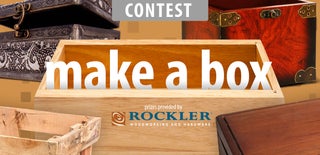Introduction: Retropie Arcade Game Machine
So I decided on making a retro arcade machine for my first raspberry pi project. Hope you enjoy my guide and find it useful :-)
Step 1: Which Software to Use?
2 main contenders, Retropie and PiPlay.
Pros and cons with each. The configuration setup with PiPlay was great but I didn't like the rest of the interface, but that's just a personal decision.
Retropie won. I used the retropie image 3.5 for ease of use, it looks great, it's easily customised and its a well documented, easy to use platform. Lots of help on the net if needed.
Download the image here - https://github.com/RetroPie/RetroPie-Setup/wiki
Step 2: Gather Your Materials
Here is a basic list of the major parts required, the nuts and bolts and glue gun etc I'd assume you have access too, if not add them to your shopping list!!
Raspberry pi 2
Screen - this one is the official 7 inch screen
Picade - Joystick controller and amplifier
Joystick - 4 switch type
Buttons - push to make mini buttons 16mm diameter
Speakers - 3w 4ohm
Power supply - official raspberry pi version
Cable and crimp connectors
Vinyl covering
Custom designed case
Step 3: Hardware Test Run
Before totally committing to the project I decided to do a hardware Test.
I only hooked up 2 buttons and the down and right switches on the joystick. No solder, just twisted ends. The test was a success as I managed to play Pitfall, ahh the memories came flooding back! Cables were then (after a thorough testing of Pitfall obviously!) soldered onto the speakers and they tested ok too.
Might have a power supply issue tho, the low power indicator on the screen flickered on when the volume was high. So a separate supply for the screen may be needed but will decide when fully assembled and fully tested.
Step 4: Cabinet Mock Up
Using sheets of A4 cardboard I roughly made a cabinet to see if the design looked good and the hardware fitted. It did!
There were no cables were attached, and the hardware was simply taped in place but it proved my design worked and the project got the green light!
Step 5: Drawing Up Plans for the Laser Cutting
With the cardboard mockup complete, the next job is to measure the cardboard model and draw up accurate plans.
I used the program Corel Draw as I know it inside and out and it's a proper WYSIWYG program, you draw a box 24mm x 39mm, it will print out a box 24mm x 39mm, simple as that!
So with the plans in hand I decided to print them out and for a final paper test. The paper test proved the measurements were good as the model fitted together.
Now to send the plans off for cutting!
Step 6: The Cabinet Arrives!
Well my friend really knocked it out of the park with the cabinet! Just look at it, its perfect!! If you want one and you're in the UK, message me and I'll put you in touch with my mate!
With the cabinet cut and delivered, the next job was deciding whether to vinyl wrap the pieces before or after assembly........I chose before as it will be easier to wrap the individual parts rather than the whole assembled cabinet.
Step 7: Assembly
The vinyl was applied first before securing the joystick and buttons. Take care when tightening the screws for the joystick and speakers, tighten the nut and not the screw as I did, as it ripped the vinyl, so I had to recover the panel again!
Next was assembling the wiring looms, pretty easy but take your time and
measure the wires as you want a nice neat job and not a huge mess of wires at the end.
A little note about the wiring, its easy! The black wires are the earth loop (3 in total, 1 for the top buttons, 1 for the bottom buttons and 1 for the jostick) and the red wires are the data cables, which go onto the picade which is clearly labelled.
The screen was attached to the surround with glued in support strips and then a few dabs of glue along the edge.
I stuck some supports on each side panel to aid with the construction - as seen in the photos. While they were drying I decided to do a full hardware test and it all went well! Next was to build the case.
I started with the joystick panel and worked my way round the case. Use plenty of glue and patience! Don't rush it!
Final pieces were the base and the side but before these went on I did another test and again it was still all ok.
Step 8: Final Testing
Final testing and tinkering stage! I mentioned earlier about maybe having to use a second power supply but I didn't have to as I attached the screen direct to the GPIO pins and the low power warning from the pi did not appear. The screen was originally connected with a USB cable but the direct connection worked best.
When testing the N64 games there were sound drop outs and stuttering pictures so I might delete them completely or try different settings at some point in the future.
I may also add some decals but I'm still undecided.
Only thing to do now is to sit back and enjoy my creation :-)
Step 9: Useful Websites Used During the Project
Raspberry pi2 and screen info - https://www.raspberrypi.org/ and http://thepihut.com
Pimeroni picade interface - https://shop.pimoroni.com/products/picade-controller-board
Retropie - https://github.com/RetroPie/RetroPie-Setup/wiki
Instructibles - if you're reading this then you are already there!!
Ebay - for the vinyl, buttons, joystick etc.

First Prize in the
Raspberry Pi Contest 2016

Participated in the
Make a Box Contest












